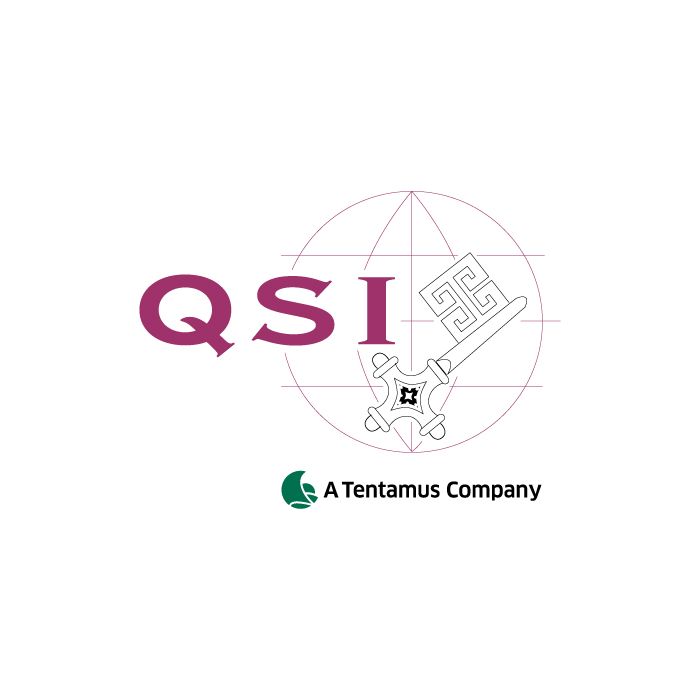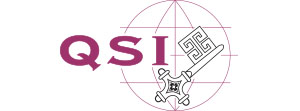Seit 2014 wird mit modernster Technik (NMR-Honey Screener Bruker) unter anderem auch die Qualität und Authenzität von Honig überprüft. Um noch präzisere und eindeutigere Ergebnisse zu erreichen, verbessern wir nun unser Evaluationssystem.
Das bisherige System deklariert Honig als typisch (nach Annex I and II EU Honey Directive 2001/110 definiert), sofern keine Abweichungen in den Parametern und dem gesamten NMR-Profil beobachtet werden. Untypischer Honig weist vorwiegend im Zucker oder den Qualitätsparametern Verfälschungen auf.
Das ab August 2017 kommende Evaluationssystem wird nun noch spezieller zwischen den Parametern „Verfälschung“ (nicht verfälscht/ verfälscht) und „Qualität“ (typisch/untypisch) unterscheiden können und ermöglicht eine noch exaktere und aussagekräftigere Evaluation von Honig.
Nachfolgend unser Newsletter auf Englisch:
New evaluation of the Honey-ProfilingTM by means of NMR:
After 3 years (since 2014) of Honey-ProfilingTM on the market with our classical evaluation system into typical and untypical, QSI decided to change their honey evaluation to be more clear and precise for their customers.
The current system declares a honey into typical (as defined by the Annex I and II EU Honey Directive 2001/110 and based on the current Honey-ProfilingTM database of Bruker BioSpin GmbH and our expert interpretation) if no deviations in the parameters and the entire NMR profile (fingerprint of the honey) can be observed. An untypical honey according to the Annex I and II EU Honey Directive 2001/110 shows indications of adulteration in the NMR profile mainly in the sugar area or also in deviating quality parameters, like a higher HMF concentration above the thresholds of 40 mg/kg and 80 mg/kg (topical origin).
From the beginning of August 2017 QSI will implement the new evaluation system. This system shall simplify and specify the evaluation of honey by means of NMR. In general if a honey comes in for testing we are looking for two aspects, first of all for adulteration with either sugar or syrup and second for the quality and authenticity of the honey. An addition of sugar or syrup would clearly lead to an „adulterated“ honey evaluation (figure 2) and quality issues like high HMF concentrations (figure 3) or fermentation indicated by high ethanol content automatically to an untypical evaluation (please see figure 1).
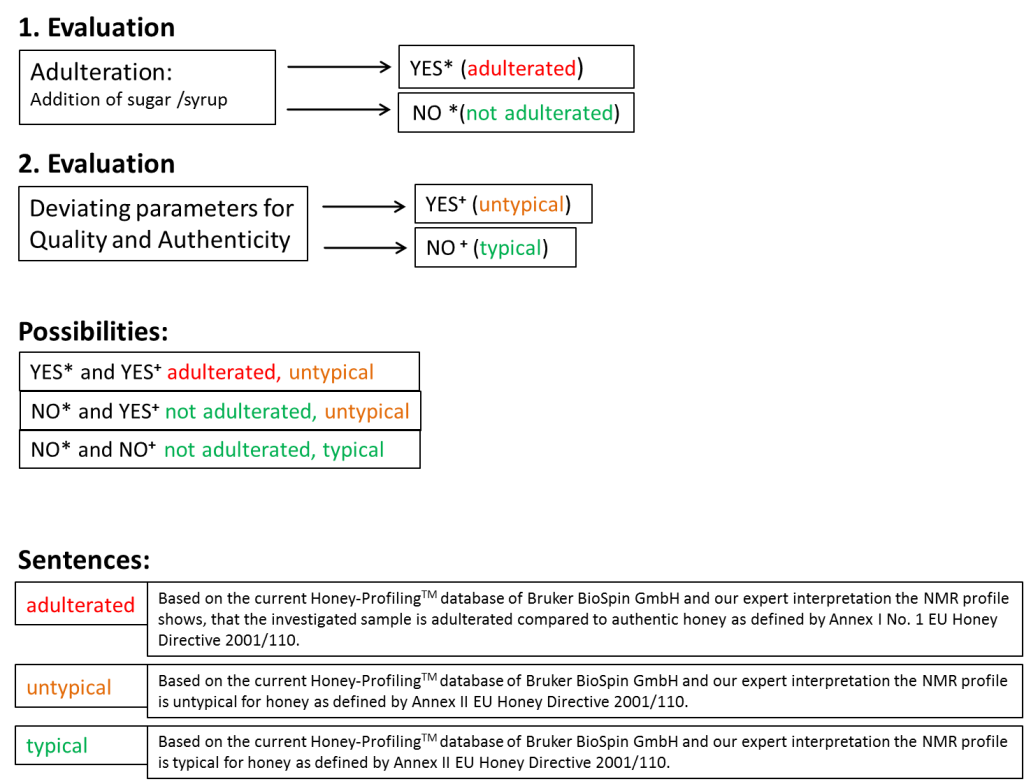
Figure 1: Overview of the honey new evaluation system by means of NMR with its possibilities and its corresponding sentences.
If the honey shows no sign of adulteration or quality issues the honey will be declared as not adulterated and typical (figure 4). The authenticity concerning the botanical or geographical origin of such evaluated honey can sometimes not be confirmed. For example a Romanian sunflower honey looks rather like a polyfloral honey (containing a lot of sunflower) and comes from Bulgaria instead. This honey remains still as not adulterated and typical and an additional remark about the origin would be written.
Test report of an adulterated honey:
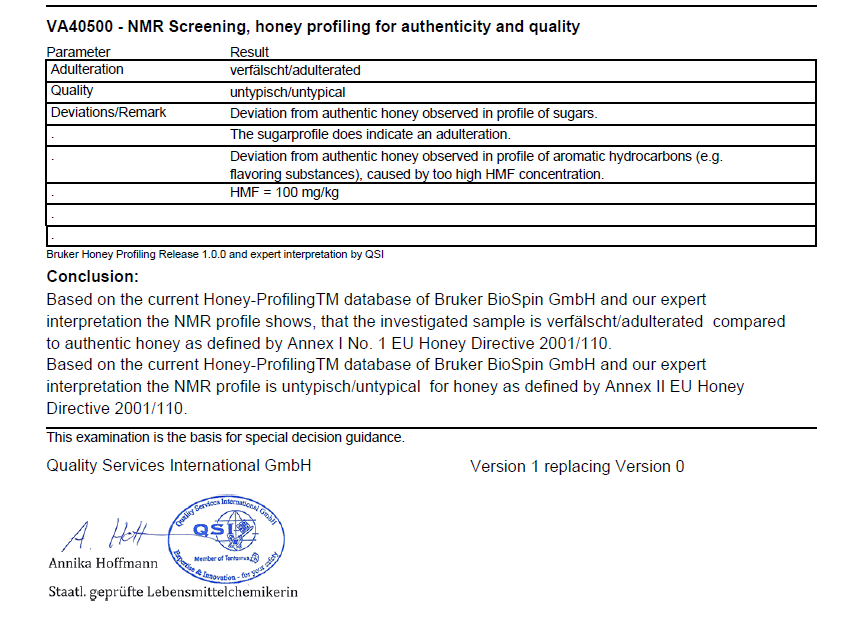
Test report of an untypical honey:
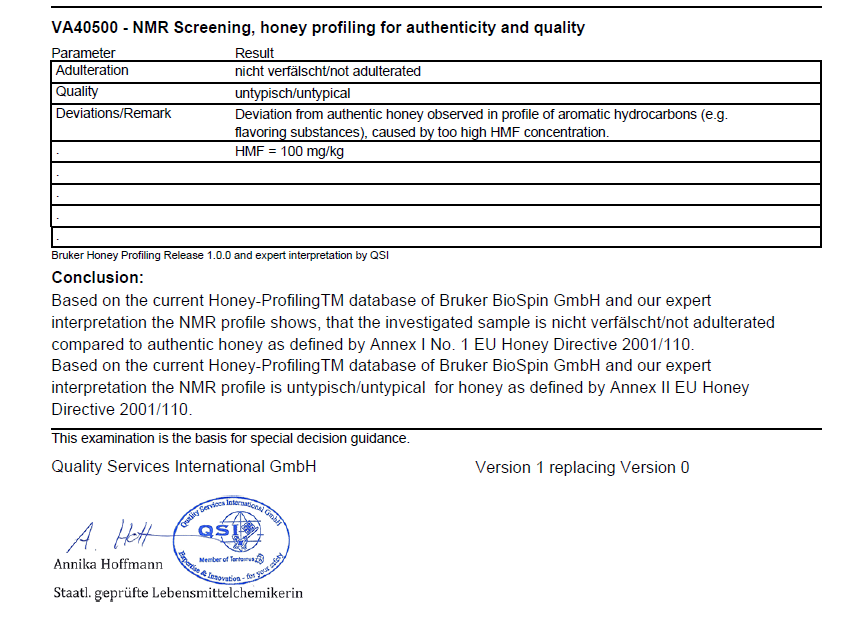
Test report of a typical honey:
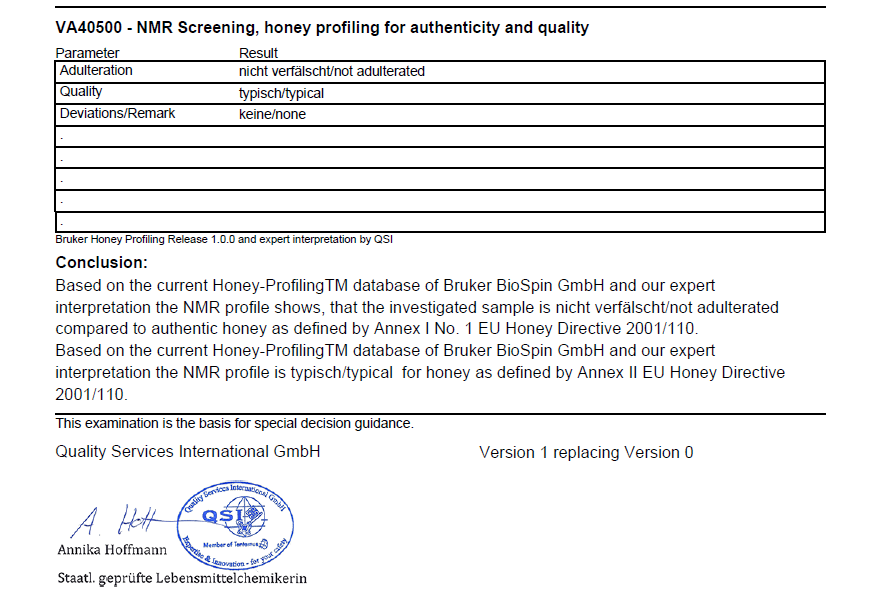
Des Weiteren planen wir, die Analysen mit NMR-Spektroskopie von Honig auch bei Substanzen wie beispielsweise Ölen oder ätherische Ölen anzuwenden.
Sie haben noch Fragen zu Angeboten der QSI? Sprechen Sie uns gerne an:
Email: info(at)qsi-q3.de
Tel: +49 (0)421 / 59 66 070
Kontaktformular
Bremen, 12.01.2018